June 22-July 31, 2020 This was the final week of the summer school. The pressure was on: presentations were to be given on Thursday afternoon, and final reports from the subgroups were due on Friday, 1 p.m. Presentations Most of the … Continue reading
Blogue MPT2013 France · Blog MPE2013 Australia
June 22-July 31, 2020 In last week’s blog post, we mentioned that the participants in the summer school had identified fifteen research questions, which had been organized under five “umbrellas”: Diseases and the Environment, Impacts of Behavior, Incorporation of Data, … Continue reading
June 22-July 31, 2020 This was the week where the rubber hit the road. Having established five “umbrella groups,” each focused on a particular theme, and grouped fifteen projects under the various umbrellas, it was time to get to work … Continue reading
June 22-July 31, 2020 This week we delved into data. Primed by the Alessandro Vespignani’s video presentation, we addressed the main topic of the summer school:Integrating observational data into mathematical models through Data Assimilation (DA). Data Assimilation Our leader Chris started the … Continue reading
We are approaching the end of week 2 — a short 4-day week because of the 4thof July holiday. Here is a summary of the past few days. This week, the focus was on modeling the COVID-19 pandemic. Here, modeling stands … Continue reading
The polar regions of our planet (and, generally, the whole cryosphere) are unique platforms for data collection. One reason why the cryosphere is a big data reservoir is that physicists prefer to study solid matter. An experiment on matter in … Continue reading
by Yemeen Ayub “But you can’t do that, … , Mr. President?“ We were tasked with roleplaying as scientists who were having a stern conversation with policy-makers. Everyone is grinning at the humor of calling each other Sir, Ma’m, or … Continue reading
The last day of the week was devoted to several exercises and some self-reflection. Anonymous polling was part of each exercise. First exercise: Think about questions that you would like us to address, given what we have heard during the … Continue reading
Today we heard from experts (morning) and practitioners (afternoon). The experts were Codilia McGehee (MD/PhD, U Minnesota), Jack O’Brian (biomath, stat, Bowdoin College), Pauline van den Driessche (math epidemiology, U Victoria), Jianhong Wu (math epidemiology, York U). The practitioners were Andrew … Continue reading
The theme for the third day was modeling and simulation, with emphasis on COVID-19. In the morning, we discussed the report “Impact of non-pharmaceutical interventions (NPIs) to reduce COVID-19 mortality and healthcare demand” by the Imperial College COVID-19 Response Team, March … Continue reading
Today, we began our quest for questions. Report on the SIAM News articles Since few of the participants in the Summer School are familiar with the dynamics of infectious diseases and pandemics like COVID-19, it made sense to start our … Continue reading
This is the first day of the Summer School on “Dynamics, Data, and COVID-19.” The Summer School is organized by the American Institute of Mathematics (AIM) in San Jose, California, and the Mathematics and Climate Research Network (MCRN), with support … Continue reading
After months of following a stay-at-home confinement strategy to slow the progression of COVID-19, many countries are now attempting a return to normal by implementing a cautious strategy of relaxing the rules of confinement. A key ingredient for the success … Continue reading
Consider the current coronavirus crisis. In December 2019, it became apparent that Covid-19 was threatening public health in a major way. Several mathematical models predicted how the virus would spread, and that a worldwide pandemic was a distinct possibility. Data … Continue reading
The SIR model is the classical mathematical tool to study the spread of an infectious disease like the current COVID-19 pandemic. In an SIR model, the population is divided into compartments of susceptible, infected and recovered individuals. A slight … Continue reading
Countries’ responses to the ongoing COVID-19 pandemic have ranged from swift, decisive, and forward-thinking to delayed, contradictory, and reactionary. What can these global responses teach us about what is needed to act on climate change in an effective and equitable … Continue reading
The newly founded group ‘Computational Geoscience’ at the Geoscience Centre at University of Göttingen invites applications for the following positions: Postdoc Position for Data-intensive Methods for the Geosciences You received your PhD on a geoscientific topic with a strong methodology focus … Continue reading
We are pleased to invite you to take part to a new series of weekly webinars designed to give the opportunity to early career researchers, PhD students and Post-Docs, working on topics related to Mathematics of Planet Earth, to share their work with researchers at all levels in the … Continue reading
On April 22, 1970, Earth Day was born. Twenty million Americans — 10% of the U.S. population at the time — took to the streets, college campuses and hundreds of cities to protest environmental ignorance and demand a new way … Continue reading
Democrats in the Senate stayed up all night talking about the perils of climate change. But while there’s hope that technology, changing consumer and business practices or new policies could finally turn the tide and slow or reverse climate change, there are also good reasons to think those efforts will fail. Continue reading

Inge Lehmann was a Danish mathematician. She worked at the Danish Geodetic Institute, and she had access to the data recorded at seismic stations around the world. She discovered the inner core of the Earth in 1936, by analyzing the seismic data from large earthquakes recorded at different stations around the world. Continue reading
![]() MPE2013 was launched at the winter meeting of the Canadian Mathematical Society in Montreal on December 7, 2013. Now, at the end of 2013, more than 140 partners are affiliated with MPE2013. “Mathematics of Planet Earth” needs to continue, and this is why MPE2013 will morph into MPE on January 1, 2014.
MPE2013 was launched at the winter meeting of the Canadian Mathematical Society in Montreal on December 7, 2013. Now, at the end of 2013, more than 140 partners are affiliated with MPE2013. “Mathematics of Planet Earth” needs to continue, and this is why MPE2013 will morph into MPE on January 1, 2014.  Continue reading
Continue reading
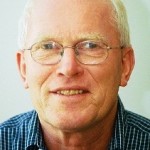
During all of MPE2013 we could enjoy almost daily blogs, in both French and English. Now that the year 2013 is coming to an end, we can look back and ask ourselves who ran the blog? None of us had realized at the beginning what a challenge this would represent. Continue reading
A thematic semester on “Biodiversity and Evolution” recently ended at the Centre de Recherches Mathematiques in Montreal. It was packed with activities, drawing both mathematicians and biologists to a stimulating exchange of recent results, methodologies and open problems.
Continue reading
Since the late 19th century until today many important breakthroughs have been made in the research of haemostatic mechanism, leading to an excellent understanding of all of the related individual systems—the vascular system, blood cells, the coagulation pathways, and fibrinolysis. Continue reading
 Figure courtesy of jma.go.jp
Figure courtesy of jma.go.jp
In the daily operation of weather forecasts, powerful supercomputers are used to predict the weather by solving mathematical equations that model the atmosphere and oceans. Continue reading
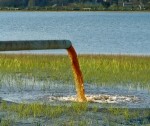 Ecological risk assessment (ERA) is an area of national and international concern, and is increasingly being driven by the need for a mathematical underpinning that addresses relevant biological complexities at numerous scales. Continue reading
Ecological risk assessment (ERA) is an area of national and international concern, and is increasingly being driven by the need for a mathematical underpinning that addresses relevant biological complexities at numerous scales. Continue reading
Coronary heart disease accounts for 18% of deaths in the United States every year. The disease results from a blockage of one or more arteries that supply blood to the heart muscle. This occurs as a result of a complex inflammatory condition called artherosclerosis, which leads to progressive buildup of fatty plaque near the surface of the arterial wall. Continue reading
A workshop on “Celestial, Molecular, and Atomic Dynamics” (CEMAD-2013) was held at the University of Victoria, Canada, 29 July-2 August, 2013. The workshop was sponsored by the Pacific Institute for the Mathematical Sciences (PIMS) and the University of Victoria, and … Continue reading

The sustainable development and utilization of mineral resources and reserves is an area of critical importance to society given the fast growth and demand of new emerging economies and environmental and social concerns. Continue reading
This month’s issue of La Gaceta de la RSME—the members’ journal of the Royal Spanish Mathematical Society—features an article by Migel Ángel Herrero (Universidad Complutense de Madrid) under the title “Matemáticas para el planeta Tierra, ciencia para el bienestar humano” (“Mathematics for Planet Earth, Science for Human Well-being”). Continue reading
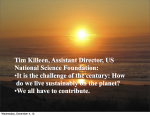 MPE 2013+, which extends MPE2013 into the future, is kicking off in January with a workshop, Mathematics of Planet Earth: Challenges and Opportunities – Introducing Participants to MPE 2013+ Topics, which will be held at Arizona State University January 7-10, 2014. The workshop aims to expose students and junior researchers to the challenges facing our planet, the role of the mathematical sciences in addressing those challenges, and the opportunities to get involved in the effort. Continue reading
MPE 2013+, which extends MPE2013 into the future, is kicking off in January with a workshop, Mathematics of Planet Earth: Challenges and Opportunities – Introducing Participants to MPE 2013+ Topics, which will be held at Arizona State University January 7-10, 2014. The workshop aims to expose students and junior researchers to the challenges facing our planet, the role of the mathematical sciences in addressing those challenges, and the opportunities to get involved in the effort. Continue reading
SIAM’s final conference in the year of “Mathematics of Planet Earth” covers the analysis of partial differential equations. Continue reading
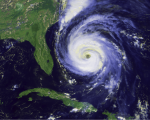 It was a hurricane season almost without hurricanes. There were just two, Humberto and Ingrid, and both were relatively wimpy, Category 1 storms. That made the 2013 Atlantic hurricane season, which ended Saturday, the least active in more than 30 years — for reasons that remain puzzling. Continue reading
It was a hurricane season almost without hurricanes. There were just two, Humberto and Ingrid, and both were relatively wimpy, Category 1 storms. That made the 2013 Atlantic hurricane season, which ended Saturday, the least active in more than 30 years — for reasons that remain puzzling. Continue reading
The atmosphere and ocean are central components of the climate system, where each of these components is affected by numerous significant factors through highly nonlinear relationships. It would be impossible to combine all of the important interactions into a single model. Therefore, determining the contribution of each factor, in both a quantitative and qualitative sense, is necessary for the development of a predictive model, not to mention a better understanding, of the climate system. Continue reading
For the blog today we recommend reading what Kofi Anan wrote for the New York Times this week. Continue reading
Last Tuesday I had the pleasure of attending the Third Annual Mitacs Awards ceremony in Ottawa. These awards recognize the outstanding R&D innovation achievements of the interns supported by the various Mitacs programs—Accelerate, Elevate and Globalink. This year, I was particularly inspired by the story of the winner of the undergraduate award category. Continue reading
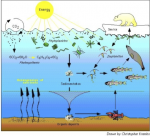 As applied mathematicians we love differential equations. So, if you are looking for an interesting set of ordinary differential equations (ODEs) with relevance for Planet Earth, you might take a look at the so-called NPZ model of biogeochemistry. Continue reading
As applied mathematicians we love differential equations. So, if you are looking for an interesting set of ordinary differential equations (ODEs) with relevance for Planet Earth, you might take a look at the so-called NPZ model of biogeochemistry. Continue reading
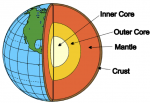 Paleo-structure modeling of the Earth’s mantle will provide crucial information on the history of plate-driven forces, the material properties of the deep Earth, the temporal evolution of the core-mantle boundary. Continue reading
Paleo-structure modeling of the Earth’s mantle will provide crucial information on the history of plate-driven forces, the material properties of the deep Earth, the temporal evolution of the core-mantle boundary. Continue reading
Making an exhibition is nicer than going to an exhibition” is a sentence that I often use to explain the interest and curiosity of the public towards science today. It shows clearly that many people want to get involved, they are keen to interact, to think along, to participate and to create. Continue reading
 Reliable power system operation requires the continuous balance of supply and demand at every moment in time. However, large-scale integration of variable generations such as solar and wind can significantly alter the dynamics in a grid because wind and solar resources are intermittent. Continue reading
Reliable power system operation requires the continuous balance of supply and demand at every moment in time. However, large-scale integration of variable generations such as solar and wind can significantly alter the dynamics in a grid because wind and solar resources are intermittent. Continue reading
Martin Nowak gave a public lecture at CRM on November 6. His lecture was part of the activities of the thematic semester “Biodiversity and Evolution,” which takes place this fall. Continue reading
Mathematical and numerical modeling can be used to better understand the physics of earthquakes, improve the design of site-specific structures and facilities, and enhance seismic-risk maps. Continue reading
 Internet advertisers and the National Security Agency are not the only ones dealing with the “data deluge” lately. Scientists, too, have access to unprecedented amounts of data, both historical and real-time data from around the world. Continue reading
Internet advertisers and the National Security Agency are not the only ones dealing with the “data deluge” lately. Scientists, too, have access to unprecedented amounts of data, both historical and real-time data from around the world. Continue reading

If you want to understand the planet Earth, then why not go back to the beginning of the Universe? The big bang is an event that we do not understand. It is thought to have happened about 13.75 billion years ago. What occurred, as we understand it, is mind blowing. Continue reading
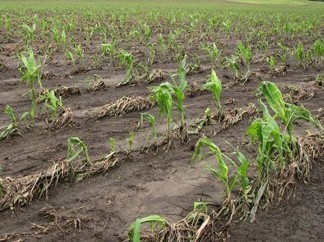
The Climate Corporation plows through huge amounts of data in order to price the crop insurance it sells to farmers. Continue reading
 Today, allow me to indulge in a bit of self-promotion on the occasion of the publication by the Society of Industrial and Applied Mathematics (SIAM) of a new textbook, “Mathematics and Climate,” co-authored by your friendly MPE Blogmaster, Hans Kaper, and my colleague, Hans Engler, at Georgetown University. Continue reading
Today, allow me to indulge in a bit of self-promotion on the occasion of the publication by the Society of Industrial and Applied Mathematics (SIAM) of a new textbook, “Mathematics and Climate,” co-authored by your friendly MPE Blogmaster, Hans Kaper, and my colleague, Hans Engler, at Georgetown University. Continue reading
Last week Philadelphia was a suburb of New Jersey. At least it seemed that way, with all the local news media coverage of hurricane Sandy on the one-year anniversary of its landing on the Jersey shore, on October 29, 2012. Continue reading
 The AARMS-CRM workshop on Sustainability of Aquatic Ecosystem Networks was held at the Fredericton Inn in Fredericton, New Brunswick, Canada, from October 22-25. This workshop was the 10th in a series of 11 workshops in the pan-Canadian MPE thematic program on Models and Methods in Epidemiology, Ecology and Public Health. Continue reading
The AARMS-CRM workshop on Sustainability of Aquatic Ecosystem Networks was held at the Fredericton Inn in Fredericton, New Brunswick, Canada, from October 22-25. This workshop was the 10th in a series of 11 workshops in the pan-Canadian MPE thematic program on Models and Methods in Epidemiology, Ecology and Public Health. Continue reading

There has been some press coverage of an article that appeared in the October 4, 2013 issue of Science called “Social Factors in Epidemiology” by Chris Bauch and Alison Galvani. The article highlights how social factors and social responses are intertwined in biological systems. Continue reading

The November issue of The College Mathematics Journal is a special theme issue supporting the Mathematics of Planet Earth initiative, MPE 2013. The issue is freely available to all. Of special interest is a guest editorial by Mary Lou Zeeman (Bowdoin College). It is a call to arms for the mathematics community to identify and engage, at a deeply intellectual level, with the mathematical challenges associated with decision making for sustainability. Continue reading

On Wednesday, November 6, Inez Fung will deliver a public lecture at the Berkeley City College Auditorium on the topic “Verifying Greenhouse Gas Emissions” as part of their series Not on the Test: The Pleasures and Uses of Mathematics. Continue reading
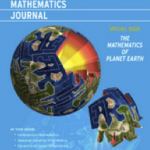
The November issue of “The College Mathematics Journal” is a special theme issue supporting the Mathematics of Planet Earth initiative, MPE 2013. Continue reading
Half-way between chemistry and physics, the exploration of applications of ultrafast laser pulses is a very promising research topic with many potential applications, including meteorology and climate. Continue reading
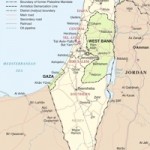
The November issue of the AMS Notices has an intriguing article about the use of mathematics to help solve the Middle East Conflict. Continue reading
Despite considerable research, earthquake dynamics remains one of the major challenges in geophysics. A recent workshop on Dynamics of Seismicity, Earthquake Clustering and Patterns in Fault Networks at SAMSI in Research Triangle Park, North Carolina, was organized to achieve progress in this field. Continue reading
 Do you know that over 50 satellites are launched every year to orbit the Earth? Have you ever wondered what the purpose of those satellites is? Here is one of them!
Do you know that over 50 satellites are launched every year to orbit the Earth? Have you ever wondered what the purpose of those satellites is? Here is one of them!
Continue reading

This Sunday, most of the United States and Canada changes from Daylight Saving Time (DST) to Standard Time: at 2:00 a.m. local time, clocks fall back to 1:00 a.m. Continue reading
A group of mathematicians, biologists and hematologists from Romania is developing new mathematical models of leukemia, with the goal to help the medical community better understand the disease and develop adequate treatment routines. Since for a certain patient, the evolution of the disease strongly depends on the features of his/her disease (or on specific parameters – mathematically speaking), these treatment strategies should be adapted to the patient characteristics. Continue reading

From October 9 – 13. 2013 many of the AIM staff were volunteering at a golf tournament, the Frys.com open. This is a PGA tour event and is a benefit to many charities including AIM. One of the days was designated AIM day to highlight the activities at AIM and one of the things the tournament directors asked us to do was make up a math+golf related quiz. Continue reading
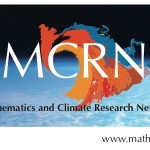
The “Mathematics and Climate Research Network” (http://www.mathclimate.org/, MCRN) held its annual meeting, October 7-12 in North Carolina.
The MCRN is a virtual organization. It brings together leading researchers across the US to study the mathematics that underlies climate science. Research is done collaboratively in focus groups over the Internet, and researchers get together once a year at the annual meeting to explore new ideas and set the agenda for upcoming activities. Continue reading
I am normally a great fan of book reviews, but one which covered a book on a climate caught my attention. I was troubled with the review that appeared in the Philadelphia Inquirer because of the way it treated climate science in general and modeling in particular. Continue reading

It is October. Very soon the inspiring canvas of the Fall foliage will be gone and we will raise our eyes once in a while to enjoy an unexplained beauty of the branched architecture of the naked trees. Yet, there might be more than a shear aesthetic pleasure in those views and this is what today’s blog is about. Continue reading
During August 2013, the Fields Institute in Toronto hosted a Focus Program on Commodities, Energy and Environmental Finance. The Focus Program addressed the interaction of markets and environment, including such MPE themes as sustainable development, effective risk management of weather events, and the role of finance in the production and consumption of energy. Continue reading
In recent years, there have been great advances in mathematical and computational modeling of cardiovascular phenomena. The ultimate goal is to develop predictive mathematical tools that can be used in medical decision-making and treatment. Continue reading
A Berkeley graduate student, George Dantzig, was late for class. He scribbled down two problems from the blackboard and handed in solutions a few days later. But the problems on the board were not homework assignments; they were two famous unsolved problems in statistics. The solutions earned Dantzig his PhD. Continue reading
SIAM News will feature two lead articles that are very relevant to the themes of Math of Planet Earth. One, by writer Dana Mackenzie, is about mathematical modeling of traffic flows; the other, by writer Barry Cipra, is about reducing energy consumption in buildings. Continue reading
You may have read Edward Belbruno’s blog on New Ways to the Moon, Origin of the Moon, and Origin of Life on Earth of October 4th. I did and was intrigued by his application of weak transfer to the origin of the Moon, so I went to his 2005 joint paper with J. Richard Gott III with the same title, published in the Astronomical Journal. Continue reading

More and more the political wrangling over the government shutdown (and the looming debt ceiling) is described as a game of “Chicken,” Continue reading
Mathematics has always responded to demands of applications, even as mathematics continued to develop its own internal structures. One need only look back to the mid-twentieth century to see the mathematics spawned by demands of the military needs of the time. Today we see a tremendous growth in applied mathematics related to biology and medicine. Continue reading
This Mpe Dimacs Rutgers Edu x DressHead High Waisted Short – Red / Thin Leather Belt comes in two different colors, red and black. Both colors are accessorized with a white belt. The front and back of the shorts has … Continue reading
In today’s blog, I will go into one of the issues in mathematical ecology mentioned in yesterday’s blog reporting on the MBI workshop on “Sustainability and Complex Systems.” The issue came up in the discussion sessions, where the question was asked how one could apply dimension-reduction techniques to individual-based models (IBMs) and derive more manageable descriptions of ecological systems. Continue reading
During the week of September 16-20, 2013, I attended a workshop on “Sustainability and Complex Systems” at the Mathematical Biosciences Institute at Ohio State. This was the first of three workshops on the theme “Ecosystem Dynamics and Management,” organized under the umbrella of MPE2013. Continue reading
What is the relationship between temperature measurements and greenhouse gas emissions, and what do these relationships tell us about the sensitivity of climate to increased greenhouse gas concentrations? How can historical temperature measurements inform this understanding? Continue reading

Another mathematical modeling success is highlighted in a September 23, 2013, Science News story that describes the evolution of ancient complex societies. One interesting fact reported is that intense warfare is the evolutionary driver of complex societies. Continue reading

As society increasingly benefits from the various types and uses of imaging, there is a growing need to integrate imaging data across modalities and to develop new imaging techniques. Not surprisingly, the mathematical sciences—mathematics, statistics, and computational science—all play a role in this growing area. Continue reading
Earlier this year, President Obama announced a major federal research initiative dubbed the “brain initiative.” According to the initial announcement, its goal was to develop and use imaging techniques to better understand neural processes and brain function. Continue reading

On September 24, 2013, I had the pleasure of attending the seventh in the nine-lecture
MPE2013 Simons Public Lecture Series. The talk was held on the beautiful
campus of Brown University in Providence, and was attended by nearly 600
people, including entire bus-loads of high school students. Continue reading
The field of celestial mechanics is an old one, going back to 90 AD when Claudius Ptolemy sought to describe the motions of the planets. However, the modern field of celestial mechanics goes back to the 1700s when Joseph-Louis Lagrange … Continue reading
There is an interesting opinion article in this week’s Wednesday New York Times, “Is natural gas `clean’?” by Mark Bittman. Continue reading
The floods that occurred earlier this month in Colorado remind us once again of the increasing talk about extreme weather events. Continue reading
I recently had the opportunity to lecture on “Aquaculture and Sustainability of Coastal Ecosystems” at the NSF-funded Mathematical Biosciences Institute (MBI) in Columbus, Ohio. The MBI focuses on different theme programs; in the fall of 2013 the theme program is … Continue reading
In a previous post, Kaitlin gave a great overview of the recent ICMS Tipping Points workshop. Today we will continue that conversation with a detailed look at efforts to understand and detect early warning signs of tipping. Continue reading
Thanks to the affordability of air travel nowadays, an increasing number of us have the opportunity to visit exotic locations around the globe. Continue reading

Interested in the role of mathematics in predicting the weather or how bacteria adapt or designing aircraft? Continue reading
 One of the greatest limiting factors to modern agriculture are plant viruses. Climate change and the emergence of new viral strains affect the health and biodiversity of crops and of plants in general, while the continued growth of the human population emphasizes the need for sustainable agriculture. Continue reading
One of the greatest limiting factors to modern agriculture are plant viruses. Climate change and the emergence of new viral strains affect the health and biodiversity of crops and of plants in general, while the continued growth of the human population emphasizes the need for sustainable agriculture. Continue reading
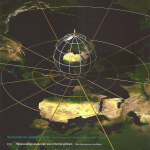
What is a wave attractor? How can we “see” below the Earth’s surface while staying above ground? And what does desertification have to do with balloons? These and other topics are discussed in the September 2013 issue of the Nieuw Archief voor Wiskunde (NAW, translated as “New Archive for Mathematics”), the quarterly journal of the Royal Mathematical Society of the Netherlands. The NAW is aimed at a broad audience: anyone professionally involved in mathematics, whether as an academic or industrial researcher, student, teacher, journalist or decision maker. Continue reading
This past week, the International Centre for Mathematical Sciences (ICMS) hosted a workshop in Edinburgh, United Kingdom. The workshop brought together an international group of mathematicians, statisticians, climate scientists, and ecologists to address the topic of tipping points. Continue reading
At the end of August, Nature Climate Change published an interesting paper showing that current global climate models tend to significantly overestimate the warming observed in the last two decades. A few months earlier, Science published a paper showing that four top-level global climate models, when run on a planet with no orography and entirely covered with water (an “aqua-planet”), produce cloud and precipitation patterns which are dramatically different from one model to another. Continue reading
On March 18, 1999, a small aircraft crashed near St. Louis, and the ensuing FAA investigation concluded that the crash was caused by wake turbulence from a helicopter that had just landed ahead of the plane. Continue reading
As part of the workshop cluster on Sustainable Human Environments, a preworkshop on urban planning for climate events will be sponsored by DIMACS/CCICADA as part of the Mathematics of Planet Earth 2013+ program. Continue reading

A full “Afternoon of Geosciences” will be organized during the “Fête de la Science” on the magnificent Château de Valrose campus in Nice, France, on Saturday, October 12, 2013. Continue reading
Invasive species are a big deal today. One need only do a simple Google search and see all the exotic species that are hitching a ride on container cargo to find a niche on a new continent. The U.S. Environmental Protection Agency (EPA) has a web site devoted to invasive species; the U.S. National Oceanographic and Atmospheric Agency (NOAA) also has a web site on this topic. Continue reading
I have been involved in the organization of a one-week educational workshop Mathematics of Climate Change, Related Hazards and Risks, which took place in Centro de Investigación Matemáticas (CIMAT) in Guanajuato (Mexico) from July 29 to August 2, 2013, as … Continue reading
Modern society is increasingly dependent on imaging technology. Medical imaging has become a vital part of healthcare, with X-ray tomography, MRI, and ultrasound being used daily for diagnostics and treatment monitoring of various diseases; meteorological radar predicts weather, sonar scanners produce sea-floor maps, and seismometers aid in geophysical exploration. Continue reading
The health of the world’s oceans has been in the news a lot over the last few months. Recent reports suggest that the oceans are absorbing carbon dioxide at unprecedented rates. The ocean is the dominant player in the global carbon cycle, and the sequestering of more carbon dioxide, a major greenhouse gas, sounds like a good thing. However, researchers have measured significant increases in ocean acidity, and they worry this will have a negative impact on marine life, especially phytoplankton. Continue reading
The American Geophysical Union (AGU) recently released a revised version of its position statement on climate change. Continue reading
The greater the plant density in a given area, the greater the amount of rainwater that seeps into the ground. This is due to a higher presence of dense roots and organic matter in the soil. Since water is a limited resource in many dry ecosystems, such as semi-arid environments and semi-deserts, there is a benefit to vegetation to adapt by forming closer networks with little space between plants. Continue reading
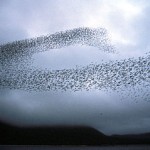
Observing collective phenomena such as the movement of a flock of birds, a school of fish, or a migrating population of ungulates is a source of fascination because of the mystery behind the spontaneous formation of the aggregating behavior and the apparent cohesiveness of the movements. However, they can also be the cause of a major environmental and social problem when one thinks, for example, of the flight of a swarm of voracious locusts ravaging crops in various parts of the world and putting many communities under severe stress. Continue reading
Here we consider the optimal control theory of infinite dimensional systems that has recently found interesting applications in theoretical economics so that economic models can be made more realistic. Continue reading

While I am a pure mathematician working in dynamical systems, I have always been fascinated by the mathematics of the N-body problem and its applications to celestial mechanics in general, and to the Solar system in particular. Continue reading
In June 2012, more than 3,000 daily maximum temperature records were broken or tied in the United States, according to the National Climatic Data Center (NCDC) of the US National Oceanic and Atmospheric Administration (NOAA). Meteorologists commented at that time that this number was very unusual. By comparison, in June 2013, only about 1,200 such records were broken or tied. Was that number “normal”? Continue reading

Biodiversity is a major concern today, with species vanishing at a high rate. Nations have launched efforts to preserve species by designating preserves or wilderness areas. Investments of money and resources are needed to establish and maintain such preserves. How does a nation or organization decide how to invest its funds and resources in order to maximize the goals of species preservation? Continue reading
A recurrent idea in science is that the loss of stability of an equilibrium position through diffusion can lead to the creation of patterns. The idea goes back to Turing in his famous 1952 paper “On the chemical basis of morphogenesis,” which proposes a model for morphogenesis through chemical reaction-diffusion. Continue reading
What do bats and oil companies have in common? Both use active sensing methods (echolocation) in pursuit of their objectives—dinner or oil reserves. Recently, the method of Gaussian beams has become a promising alternative for asymptotic solutions to the wave equations in place of the traditional methods based on geometric optics for finding approximate short-time solutions. Continue reading
A workshop “Mathematics of Planet Earth: Challenges and Opportunities” will be held at Arizona State University, January 7-10, 2014. The workshop aims to expose students and junior researchers to the challenges facing our planet, the role of the mathematical sciences in addressing those challenges, and the opportunities to get involved in the effort. Continue reading
Weather extremes capture the public’s attention and are often used as arguments in the debate about climate change. The concern that extreme events may be changing in frequency and intensity as a result of human influences on climate is real, but the notion of extreme events depends to a large degree on the system under consideration, including its vulnerability, resiliency, and capacity for adaptation and mitigation. Continue reading
Ten years ago today (8/14/2003), the northeastern U.S. suffered the worst blackout in U.S. history, when about 15 million people lost power. The massive loss of power was attributed to a small event that cascaded through the complex power distribution system. Continue reading
The IMA is offering a workshop, “Imaging in Geospatial Applications” from September 23 to 26, 2013. Continue reading
When asked to give an invited lecture at the first ever Mathematical Congress of the Americas, I jumped at the chance. This would be an opportunity to meet new colleagues from the Americas and to share my interest in mathematical ecology. Continue reading
The MPE2013 Daily Blog is taking a summer break. The next post is scheduled for August 15, 2013.

It has been known since Gauss that it is not possible to draw maps of the Earth that preserve ratios of distances. Continue reading
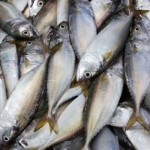
Image courtesy of Stoon/ FreeDigitalPhotos.net
There are two standard ways to restrict harvesting of fish in order to maintain or improve the population. One way is to establish marine protected areas where fishing is prohibited and the other is to allow fishing everywhere but at something less than maximal capacity. Just a few days ago I noticed an interesting preprint in ArXiV that sets up a mathematical framework for deciding whether protected areas should be used and, if so, where they should be established. Continue reading
In support of worldwide MPE2013 efforts, NSF’s Mathematical Biosciences Institute (MBI) at Ohio State University is hosting three autumn workshops aimed at the interface of mathematics and the science of sustainability. Continue reading
The American Geophysical Union held its 2nd Annual Science Policy Conference in the Walter E. Washington Convention Center in Washington, DC, June 24-26. Continue reading
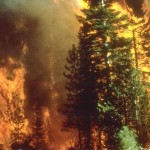
“It’s fire season in the forests and wildlands of America.” So began an article by Barry Cipra (“Fighting Fire with Data’). I recalled this article after hearing about the tragic events in the forest fires in Arizona earlier this week, Continue reading
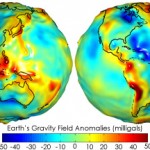
If we take a simple model of the surface of the Earth to be a sphere of radius R, then the altitude of a point is its distance to the center of the Earth minus R. But we know that the surface of the Earth is not exactly a sphere Continue reading

Mathematics analyzes numerous aspects of financial markets and financial instruments. For the markets trading CO2 emissions, mathematics is used to decide how cap and trade rules will operate. Continue reading
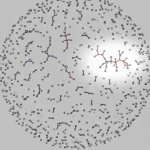
The AIM workshop on exponential random network models was an experiment, bringing together people in applied social sciences, biologists, statisticians, and mathematicians who are interested in the emerging field of graph limit theory. Continue reading
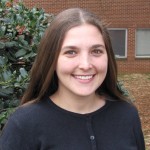
When paleobiologist Michelle Lawing joined field expeditions to collect rattlesnake data in the deserts of Southwestern America, she didn’t expect that her research would uncover such grim predictions for the rattlesnakes and their habitats in the future. Continue reading
No matter how surprising, outlandish, or even impossible it may seem, one of the next challenges of modern applied mathematics is the modeling of human behaviors. Continue reading
“This is a day to celebrate that we have a president of the US standing up
for the world in which we live and the future generations that will
inhabit it.” Chris Jones, Director, Mathematics and Climate Research Network Continue reading
It was important for me to speak directly to your generation, because the decisions that we make now and in the years ahead will have a profound impact on the world that all of you inherit. Continue reading

MPE2013 features a wealth of public lectures to highlight the year of Mathematics of Planet Earth. There is also a public lecture (the I.E. Block Community Lecture) associated with the SIAM Annual Meeting, and the topic of lecture this year follows an MPE theme. Continue reading
Is the Earth’s orbit stable? Will the Moon always point the same face to our planet? Will some asteroid collide with the Earth? Continue reading
The use of computational methods to explore complex social and cultural phenomena is growing ever more common. Continue reading
Vegetation patterns are a mysterious phenomenon that we can think about in the same way as patterns that form in many other contexts. What’s more, they may have importance that transcends their beauty. Continue reading
The Center for Discrete Mathematics and Theoretical Computer Science (DIMACS) and the Command Control Interoperability Center for Advanced Data Analysis (CCICADA), both based at Rutgers University, have collaborated on some recent activities to enhance the summer experience for several undergraduate students participating in the DIMACS/CCICADA Research Experiences for Undergraduates (REU) program. DIMACS and CCICADA recently co-hosted a workshop on Science and Technology Innovations in Hurricane Sandy Research. Continue reading
What exactly is the definition of the “social cost of carbon” (SCC)? Who is interested in determining this quantity? Who is interested in its value? Can this even be done and, if so, how accurately? Continue reading
MPE2013 Public Lecture — Jane Wang, Fields Institute, June 21, 2013. Continue reading

As a large crowd gathered at CRM on Friday evening, May 10, to hear Paul Embrechts, Professor of Mathematics at the Swiss Federal Institute of Technology in Zürich (ETHZ), everyone was wondering how he would connect “Königsberg’s bridges, Holland’s dikes, and Wall Street’s downfall.” Continue reading
Today’s blog is a short blog about a “Blog on Math Blogs.” Continue reading
When I was at the hardware store the other day buying a replacement for a burnt out light bulb I saw the array of LED bulb options. Continue reading

The 2013 SIAM Conference on Mathematical and Computational Issues in the Geosciences will be held in Padua, Italy, June 17-20. Continue reading
Starting June 10, the MPE2013 Daily Blog will appear Monday through Friday.
MPE is a diverse subject, with respect to both applications and the mathematics itself. This was driven home to me at the recent SIAM Conference on Dynamical Systems in Snowbird, Utah, when I attended a session on “Supermodeling Climate.” Continue reading
In a recent op-ed for The Post, Rep. Lamar Smith (R-Tex.) offered up a reheated stew of isolated factoids and sweeping generalizations about climate science to defend the destructive status quo. Continue reading
The National Museum of Natural History and Science of the University of Lisbon, Portugal, has added several new and significant displays to the exhibition “Forms and Formulas” in the framework of the Portuguese activities for MPE2013. Highlight is the winning entry of the MPE2013 competition, “The Sphere of the Earth,” an interactive module created by Daniel Ramos (Spain). Continue reading
Martina Morris, a Professor of Sociology and Statistics at the University of Washington, studies the transmission of sexually transmitted diseases like HIV using network analysis. Continue reading
Is it possible to compute the past climate of the Earth at the time of dinosaurs? Continue reading
Looking back, the “Keeling curve” of CO2 concentrations ranks among the most significant achievements of twentieth-century science. Continue reading

UCLA Professor Andrea Bertozzi is applying the powerful tools of mathematics and big data analysis for mapping crime patterns – with implications for crime prevention. Continue reading
Two recent articles, written for a general audience, provide examples from the applied mathematics literature that show how mathematics is used to model and understand the progression and propagation of certain kinds of infections. Continue reading
The workshop “Mathematical Models and Methods for Planet Earth,” organized by the Italian National Institute for Advanced Mathematics (INdAM) under the auspices of MPE2013 in Rome, May 27-29, finished a few days ago. Continue reading
The Pacific Institute for the Mathematical Sciences (PIMS) is organizing a Mathematical Biology Summer School at the University of Alberta in Edmonton, Canada, May 27-June 14, 2013, on “The Mathematics Behind Biological Invasions.”
Continue reading
Several articles in the past few weeks have caught my attention. Continue reading
The SIAM Activity Group on Dynamical Systems (SIAG/DS) held its biennial meeting (DS13) at the Snowbird Ski and Summer Resort in Snowbird, Utah, May 19-23, 2013. Continue reading
In recent years, governments around the world have experimented with many different policy tools to encourage the growth of renewable energy. Continue reading
The Italian National Institute of Advanced Mathematics (INdAM) is organizing a Workshop “Mathematical models and methods for Planet Earth” in Rome, Italy, on May 27-29, 2013. Continue reading
A diverse group of 42 scholars from 15 countries converged this week at BIRS for a workshop on “Non-Gaussian Multivariate Statistical Models and their Applications.” Continue reading

Compared with a conventional textbook it’s obvious that an e-text saves energy and reduces greenhouse gas emissions—or is it? Continue reading
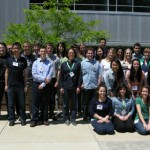
During the week of May 13, 2013, thirty-four students from around the United States attended the Statistical and Mathematical Sciences Institute (SAMSI) Undergraduate Modeling Workshop. Continue reading
Releasing a ton of carbon dioxide into the atmosphere has quite a different effect on the global average temperature than releasing a ton of methane. Have you ever wondered how the effects of different greenhouse gases are compared? Continue reading
In coastal ocean, estuary, and lake systems, there is much interest in understanding, detecting, and predicting biological events. Continue reading
“Neglected Tropical Diseases” isn’t just a generic title for all the forgotten diseases in the world; it’s a specific designation on behalf of the World Health Organization for 13 particular diseases that qualify for neglected status. Collectively, these diseases infect about one sixth of the world’s population. Continue reading

The full report on The Mathematical Sciences in 2025 from the National Academies Press is now available for download. Continue reading
This week at AIM features a MPE related workshop concerned with boundary-value problems for nonlinear dispersive evolution equations and systems. The workshop has participants with diverse interests in both the pure and applied aspects of such problems. Continue reading

The 2013 SIAM Conference on Applications of Dynamical Systems (DS13) will be held at the Snowbird Ski and Summer Resort, Snowbird, Utah, May 19-23. Continue reading
There is widespread interest in finding and designing spacecraft trajectories to the Moon, Mars, other planets, or other celestial bodies (comets, asteroids), which require as little fuel as possible. Continue reading
Pressure is an important property of fluid flow, and it is known that the pressure changes continuously in the fluid domain. In the coupling of flows of different nature, however, the situation can be more complicated and discontinuities may appear in the pressure field. Continue reading
“The science is clear,” climate scientist Emily Shuckburgh told an audience of nearly 800 people at San Francisco’s Palace of Fine Arts on March 4. Continue reading
A workshop on “Major and Neglected Diseases in Africa” was held at the University of Ottawa, May 6-10, 2013. Continue reading

Cats were the subject of a recent, surprising news item. A group of computer scientists at Google and Stanford University fed YouTube videos to a computer that was running a “machine learning” program. Continue reading
A couple of weeks ago I saw former president Jimmy Carter on the Daily Show. The story he told Jon Stewart was nothing short of amazing. Continue reading
An interesting collection of web videos from the Energy Systems Week at the Isaac Newton Institute. Continue reading
Commodities and energy markets continue to grow in activity and influence. Because of the growing concern about environmental issues inherent to the production and consumption of energy, quantitative insights into these marketplaces are crucial for sustainable development and policy making with respect to climate change. Continue reading

I recently had the opportunity to travel to the Antarctic peninsula on board the National Geographic Explorer. We departed out of Ushuaia, Argentina, crossed the Drake Passage and spent the better part of a week exploring the northwestern side of the Antarctic peninsula from the South Shetland Islands to just inside the Antarctic Circle in Crystal Sound. Continue reading
Uncertainty issues are paramount in the assessment of risks posed by natural hazards and in developing strategies to alleviate their consequences. In a paper published last month in the SIAM/ASA Journal on Uncertainty Quantification, Jerome and Seth Stein describe a model that estimates the balance between costs and benefits of mitigation following natural disasters, as well as rebuilding defenses in their aftermath. Continue reading
MPE2013 gives us an opportunity to learn more about our planet. There are interesting features to be explored that require simple but deep principles of physics and that can become the basis of a discussion in the classroom. Continue reading
Brinicles are fun things to think about, but they also have broader implications. On one hand, as heat flows through them, they contribute to the energy balance in the ice pack around Antarctica. On the other hand, brinicles may have played a role in the beginnings of life on the early Earth. Continue reading
Today’s blog is an update on a story that was in the news earlier and also some comments on a recent article in the New York Review of Books. (See the blog of 4.11.2013.)
Continue reading
Climate tipping points refer to sudden rapid transitions of the Earth’s climate that are precipitated by initially small changes of the natural environment. For instance, tipping points could correspond to the activation of positive feedback loops that then lead to a major change in the climate. Continue reading
Infographics (short for Information Graphics) are graphic visual representations of information, data or knowledge. They are intended to present complex information quickly and clearly. If done right, they enhance our visual system’s ability to see patterns and trends. Continue reading
How fast does water flow through sand or soil? Maybe not so fast, but everyone has seen water soak into beach sand and garden soils. Most people have also noticed a concrete sidewalk soaking up a little water as rain begins to come down. But how fast does water flow through a rock? Continue reading
The Earth is a giant dynamical system that evolves over time at various scales, depending on the state(s) of interest. Therefore, it is not surprising that a conference on applied dynamical systems would feature topics central to Mathematics of Planet Earth 2013. Continue reading
Sandy coasts have a smooth profile while rocky coasts have a fractal nature. One characteristic feature of a rocky coast is that new details appear when we zoom in on it. And if we were to measure the length of the coast, the length would increase significantly when zooming in on the details. Continue reading
How precarious is the existence of the Monarch butterfly? Does personal diet affect the environment? What are the consequences of increased human life expectancy? Continue reading

Our team had begun our initial work on what we call the “berry problem”, and I was able to describe our efforts to help stakeholders in the Pajaro Valley region in California balance water needs among competing interests. Continue reading
Most buildings more than 20 years old are energy “hogs.” They take a lot of energy to heat in the winter, and they take a lot of energy to cool in the summer. The benefits of saving energy in buildings are enormous. Continue reading
It is well known that sea ice has a significant influence on the Earth’s climate system. While global warming causes Arctic sea ice to melt at a measurable and significant rate, sea ice surrounding Antarctica has actually expanded, with record extent in 2010. How can this somewhat paradoxical behavior be reconciled with global warming? Continue reading
Hydrogen fuel cells are of interest as an alternative energy technology. They are electrochemical systems that combine hydrogen and oxygen (from air) to produce electrical energy. They have potential for use in many applications, including automotive, stationary power and small-scale power for mobile electronics. Continue reading
Climate science relies on modeling and computational simulation. Improving the algorithms and codes related to climate modeling is an ongoing research effort. Continue reading
Since the beginning of MPE2013, I have met people who were surprised when I classified celestial mechanics as a topic that would fit under Mathematics of Planet Earth. But part of celestial mechanics is concerned with planetary motion, and Earth is a planet. Continue reading
This week (April 14-20) is National Environmental Education Week. Monday April 22 is Earth Day! On that day, the U.S. Department of Education will announce the winners of the second annual Green Ribbon School awards. Continue reading
Mpe.Dimacs.Rutgers.Edu x Dress Head Polka Dot Skater Dress – V-Neck / Three-Quarter Length Sleeves Polka dots are making a huge comeback, so is this Mpe.Dimacs.Rutgers.Edu x http://www.dresshead.com/c/skater-dress/ adorable navy blue skater dress with white polka dots and three-quarter length sleeves … Continue reading

In January of 2011, AIM held a Sustainability Problems workshop, with the goal of bringing together mathematicians and industry representatives to work on a variety of sustainability problems, including renewable energy, air quality, water management, and other environmental issues. Continue reading
An exciting aspect of the relationship between mathematics and biology is the potential — the expectation even — that biology will provide the impetus for new mathematics, and that the feedback loop between mathematics and biology will be at least as influential and exciting as the one mathematics and physics has enjoyed for over 2000 years.
Continue reading
Could the cold weather experienced in northern Eurasia this winter be related to the decrease in Arctic sea ice? This question is currently being debated in the media in Europe. This post shows some weather maps and links to several relevant blogs and articles. Continue reading
It was unusually warm and windy for early April. We piled into the toasty lecture hall with drinks and sandwich wraps in hand. Dr. Smith, with his shock of white hair and the thin frame of a marathon runner, shed his sport jacket as he recounted the 2003 European heat wave. Continue reading
Mathematical modeling and data analysis play a critical role in the mathematics of Planet Earth. Continue reading
“Mathematicians listen as the Earth rumbles… ” was the title of the fourth MPE Simons Lecture given by Ingrid Daubechies in Montreal on April 10. Her splendid lecture was delivered in French, but both English and French videos of the lecture will be on display soon on the Simons website. Continue reading
The Next Generation Science Standards have just been released. They propose that climate change be an integral part of science education starting already in middle school. Continue reading
Last Friday, the Wall Street Journal published an essay by E.O. Wilson that has since generated much discussion from readers (229 comments to date) on the WSJ website and also among mathematicians. Continue reading
A lake that used to be clear, with a rich vegetation and a diverse aquatic life, suddenly becomes turbid, with much less vegetation and only bottom dwelling fish remaining. It turns out that the change comes from increased nutrient loading, but when the runoff leading to the nutrient inflow is reduced, the lake doesn’t become clear again – it remains murky. Continue reading

Please join us at the World Conference on Natural Resource Modeling. This annual meeting is run by the Resource Modeling Association. In June 2013, the conference will be held at Cornell University. Continue reading
A workshop “Mathematics of Climate Change, Related Natural Hazards and Risks” will take place in Guanajuato, Mexico, July 29 to August 2, 2013. The application deadline for participants is April 30, 2013. Priority will be given to young researchers from Latin America and the Caribbean. Continue reading
Last week I attended “MECC 2013” – the International Conference and Advanced School Planet Earth, Mathematics of Energy and Climate Change, Portugal, 21-28 March 2013. Continue reading
Mathematical models can be used to study the spread of technological innovations among individuals connected to each other by a network of peer-to-peer influences, such as in a physical community or neighborhood. Continue reading
Last September the White House honored Michael Flowers, New York’s Director of Policy and Strategic Planning Analytics, as a Champion of Change. Flowers’ team figures out ways to use an effective combination of common sense and analysis of data to efficiently solve some of New York’s vexing problems. Continue reading
As the energy needs are expected to surpass the energy content found in available fossil-fuel resources in this century, interest in renewable energy sources has increased in the past decade. One area of interest is in geothermal energy harvesting. Continue reading
April is Mathematics Awareness Month (MAM). This year’s theme is Mathematics of Sustainability, which explores how mathematics helps us better understand these complex questions. Continue reading
We hear regularly some warnings of scientists on the important rise of the sea level that will occur before the end of the century. The worst scenario usually predicts a rise of less than a meter before 2100. Where does this number come from? Continue reading

A distinguished panel of experts, gathered by the National Academies, has recently produced a very interesting and informative publication: Fueling Innovation and Discovery: The Mathematical Sciences in the 21st Century. This publication was released by the National Academies in advance of their report The Mathematical Sciences in 2025, developed with support from the National Science Foundation. Continue reading
Assuring a sustainable future for our children and grandchildren is, arguably, the greatest challenge facing humanity and raises a plethora of scientific and mathemat- ical challenges. In the language of the Brundtland Report World Commission on Environment and Development, 1987, it means leaving for future generations the same options we have for how we want to live our lives. However, operationalizing that concept is easier said than done. Continue reading
This morning I heard a lecture by Rick Anthes, president emeritus of UCAR, former director of NCAR. His talk was entitled “Butterflies and Demons,” and the subject was predictability of weather and climate. He was a witness to, and participant in the development of numerical weather prediction in the form it exists today at weather centers worldwide. It was a particularly interesting and provocative talk.
Continue reading
Last Saturday, at the Association for Women in Mathematics (AWM) Research Symposium at Santa Clara University, Inez Fung gave a wonderful spirited lecture on “Climate Math.” Continue reading

I’ve been wondering whether it’s more energy efficient to go out and buy something at a local store or to order it over the internet and have it delivered to my door. Continue reading
In 1941, the Serbian mathematician Milutin Milankovitch (1879–1958) suggested that past glacial cycles might be correlated to cyclical changes in the insolation (the amount of solar energy that reaches Earth from the Sun). Continue reading

The American Physical Society (APS) now has a Topical Group on the Physics of Climate (GPC). Continue reading
For the past nine weeks, I had the privilege to teach a Massive Open Online Course(MOOC) on image and video processing. Continue reading
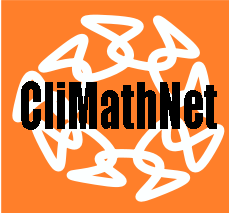
The first CliMathNet conference will be held on 1st-5th July 2013 in Exeter, UK. Continue reading
This month marks the 50th anniversary of the 1963 publication of Ed Lorenz’s groundbreaking paper, “Deterministic Nonperiodic Flow,” in the Journal of Atmospheric Science. This seminal work, now cited more than 11,000 times, inspired a generation of mathematicians and physicists to embrace the nonlinearity governing our complex world. Continue reading
It took approximately 40 years for the community of mathematicians to become aware of the various difficulties facing human society in the near future and to accept to work on these questions. Continue reading
One of the most famous images in Japanese art is the Great Wave off Kanagawa, a woodblock print by the Japanese artist Hokusai. The print is also famous in mathematics: the structure of the breaking wave at its crest illustrates features of self-similarity, and the large amplitude of the wave has led it to be interpreted as a rogue wave generated from nonlinear wave effects. Continue reading
While the European launch of MPE2013 was taking place at the UNESCO Headquarters in Paris, a youth festival was taking place in Lisbon at “Pavilhão do Conhecimento,” the largest science center in Portugal, with hundred of pupils participating in mathematics popularization activities directly or indirectly related to the mathematics of planet earth for schools. Continue reading
March 11 marks the second anniversary of the 2011 9.0 earthquake with epicenter located off the coast of Japan, which caught the world—including expert seismologists—by surprise. It was a stark reminder of how much is still unknown about faults and their sudden, catastrophic, behavior. Continue reading
Sub-Sahara Africa is the epicenter for both the HIV epidemic and poverty. Continue reading
 San Francisco - Palace of Fine Arts
San Francisco - Palace of Fine Arts
On Monday, March 4, Emily Shuckburgh delivered the second of the MPE2013-Simons Public Lecture Series talk, “Climate disruption: what math and science have to say” at the Palace of Fine Arts in San Francisco. Continue reading

In recognition of Mathematics of Planet Earth 2013, the SIAM Journal on Scientific Computing (SISC) has dedicated a special issue to Planet Earth and Big Data. Continue reading

On March 5, at 9:00 am, the first visitors started to explore the 20 modules of the first MPE exhibition at the UNESCO Headquarters in Paris. Continue reading
Twenty-nine entries were submitted for the competition for modules for a virtual exhibition Continue reading
Today, Europe celebrates an exceptional event for mathematics. Our concern today is the exposure to scientists and to society at large of one of the most valuable heritages of human knowledge: mathematics. Continue reading
Les observations mettent en évidence un réchauffement global du climat et une augmentation de la concentration en gaz à effet de serre dans l’atmosphère. Continue reading
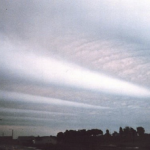
Though waves of one sort or another are a ubiquitous part of our daily experience, we have to get on with our lives, and therefore tend not to think of the wavelike nature of daily phenomena. Those fortunate among us who can escape to the shore on a hot August week can then take the time to observe the sea and the waves she sends us. Continue reading

MPE2013 continues to spread among schools, science centers and universities. Many people are enthusiastic and eager to organize MPE activities. But what is an MPE topic?
Continue reading
MPE2013 is a success. It is has generated enthusiasm all over the world, and it is giving mathematics more visibility than we could have hoped for. Continue reading
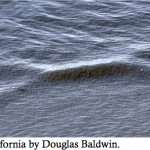 Long stem X-type interactions with taller stem height
Long stem X-type interactions with taller stem height
This past week at AIM Mark Ablowitz told me about an interesting article (with beautiful pictures) he wrote with Douglas Baldwin called “Nonlinear shallow ocean-wave silicon interactions on flat beaches.” The propagation of these waves may contribute to the growth of tsunami waves. Continue reading
A small research group has been meeting at the American Institute of Mathematics (AIM) in Palo Alto, CA, during the week of Feb. 18-22 to work on integrable systems of nonlinear Schroedinger type, a special class of nonlinear partial differential equations (PDEs). Continue reading

The interesting “Henbury Conservation Project” was brought to my attention by Ian Noble at the JSPS Symposium on “Climate Change.” Thanks, Ian, for a very good presentation on “Land and Our Responses to Climate Change.” -HGK Continue reading
One of the reasons for designating 2013 as the year of “Mathematics of Planet Earth” is to showcase the work done by mathematics in application areas like climate, ocean, and earth sciences. The SIAM Conference on CS&E, which begins on February 25th, contains many sessions relevant to MPE 2013. Continue reading

On Friday, February 23, 2013, I attended a Symposium on “Climate Change,” organized by the Japan Society for the Promotion of Science (JSPS) and co-sponsored by the AAAS, NAS, NASA, NOAA and NSF. The symposium was held at the Cosmos Club in Washington, DC. Continue reading
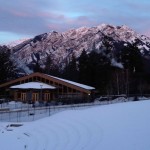
I was planning to send an update every day from the data assimilation workshop at the Banff Center, but I’ve been so busy here that by the time I get back to my room I’m ready to collapse. The Banff Center is the best place I know of for a workshop. It’s almost like working hard and being on vacation at the same time, with the benefits of both. Continue reading

I was planning to send an update every day from the data assimilation workshop at the Banff Center, but I’ve been so busy here that by the time I get back to my room I’m ready to collapse. The Banff Center is the best place I know of for a workshop. It’s almost like working hard and being on vacation at the same time, with the benefits of both. Continue reading
Last week a workshop was held at the American Institute of Mathematics (AIM) in Palo Alto, California, around the theme of stochastic PDEs and applications in climate and weather modeling: “Stochastic in Geophysical Fluid Dynamics: Mathematical foundations and physical underpinnings.” The workshop brought together a lively mix of specialists in climate modeling and weather prediction alongside experts in the fields of deterministic and stochastic partial differential equations. Continue reading

We are pleased to announce the 2013 AARMS Mathematical Biology Workshop to be held at Memorial University of Newfoundland, July 27-29, 2013, in St John’s, Newfoundland. Registration closes on May 17, 2013 and abstracts should be submitted by June 30, 2013. Continue reading
The close approach of the asteroid that we have all read about in the newspapers represents something of a coincidence for me as I prepare for the data assimilation workshop in Banff this coming week. Continue reading
“Science without data is science-fiction.” This was on of the boldest (if more facetious…) statements heard at the workshop “Models and Methods in Ecology and Epidemiology (M2E2)” held at CRM last week. Speakers from very diverse backgrounds presented a wide rage of mathematical models developed to better understand the dynamics and propagation mechanisms of, amongst others, Avian Flu, Lyme Disease and the West Nile virus. Throughout the presentations, the pervasive role played by data incorporation in the models was emphasized, and the equally important organization of model development as a team effort was underlined. Continue reading
Perhaps you’ve seen this already, but it’s pretty amazing, and features some well-known faces: Earth from Space Sean Crowell Mathematics and Climate Research Network (MCRN) sean.m.crowell@gmail.com
You would be forgiven for not initially recognizing some of the high-level similarities between the practice of research in sciences such as physics and research in ornithology. One basic similarity is that we are all constrained in what we can measure. Quantum physics has its uncertainty principle that describes limits on what can be measured. Ornithologists are at times limited in what they can measure by the very things that they are trying to observe: birds will sometimes actively avoid detection. Continue reading
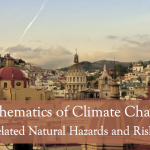
A 5-day workshop on “Mathematics of climate change, related hazards and risks” will be held at the Centro de Investigación en Matemáticas (CIMAT) in Guanajuato, Mexico, July 29-August 2, 2013. This workshop, organized as part of the global program Mathematics of Planet Earth 2013 (MPE2013), is a satellite workshop associated with the 2013 Mathematical Congress of the Americas (MCA). Continue reading
One hears occasionally in the popular media that one possible consequence of global warming might be the disappearance of the Gulf Stream. This makes physical oceanographers cringe. The Gulf Stream and its analogs in other ocean basins exist for fundamental physical reasons. Climate change may well bring changes in the Gulf Stream. It may not be in the same place, may not be of the same strength or have the same temperature and salinity characteristics, but as long as the continents bound the great ocean basins, the sun shines, the earth turns toward the east and the wind blows in response, there will be a Gulf Stream. Continue reading
A scientific workshop, as part of the pan-Canadian MPE2013 thematic program “Models and Methods in Ecology, Epidemiology and Public Health (M2E2)”, started at CRM today. The workshop, focusing on models and methods in ecology and epidemiology, was designed to initiate … Continue reading
I have been involved with MPE2013 activities since the first organizing workshop was held at AIM in March of 2011, not as a mathematician with MPE areas of interest, but more as an institute staff member helping to bring about … Continue reading
Mathematics allows us to explain some of Earth’s past climates. Indeed, they are linked in particular to variations of the orbit of the Earth. While the movement of the Earth is not quasi-periodic (i.e., a superposition of periodic movements), mainly … Continue reading
It is increasingly clear that we are initiating a sequence of dramatic events across our planet. They include habitat loss, an increased rate of extinction, global warming, the melting of ice caps and permafrost, an increase in extreme weather events, … Continue reading
Prepared by Ali Nadim (Claremont Graduate University) and Ami Radunskaya (Pomona College) What do green buildings, environmental toxins, sources of ozone pollution in the atmosphere, and infrastructure planning for electrical power have in common? They were all topics of intense … Continue reading
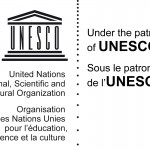
An exciting day is coming up shortly. Now that MPE2013 has been launched in North America, the next launch will take place in Europe at the UNESCO Headquarters in Paris on March 5, 2013. The same day will see the … Continue reading
What is the role of mathematics in climate science? Climate science, like meteorology, is largely a branch of physics; as such, it certainly uses the language of mathematics. But could mathematics provide more than the language for scientific discourse? Continue reading
A workshop is taking place this week at the American Institute of Mathematics (AIM) in Palo Alto, California, on “Stochastics in Geophysical Fluid Dynamics: Mathematical foundations and physical underpinnings.” This workshop is co-organized by Nathan Glatt-Holtz (Institute of Mathematics and … Continue reading

A book review in the January 11 issue of Science magazine begins with a wonderful line: “It is not often that mathematical theory is tested with a machine gun.” The book under review is “How Species Interact: Altering the Standard … Continue reading
I have wanted to run this story down since I saw the reference in Lamb’s Hydrodynamics to a paper by G. I. Taylor that contains a description of what oceanic and atmospheric scientists call “Ekman layers.” Physical oceanographers learn early … Continue reading
Why has the MPE2103 movement been popular with mathematicians? The traditional view of mathematicians is that they like to work in solitude and that there is a great divide between pure and applied mathematicians. So how has MPE2013, a massive collaborative effort on the part of pure and applied mathematical scientists, managed to bridge this chasm? Continue reading
Earlier this week, I had the good fortune to attend a talk here in Washington, DC, by former Vice-President Al Gore on “The Future, Six Drivers of Global Change.” This is the title of his latest book, which had just appeared. The talk was sponsored by my favorite bookstore, “Politics and Prose.” Continue reading

With a packed lecture theatre and the atmosphere to match, yesterday’s launch of Australia’s participation in Mathematics of Planet Earth was the big red-carpet event for maths and stats. Australian Chief Scientist, Professor Ian Chubb, opened the proceedings by discussing … Continue reading

Like four years ago, my good friend David Levermore (U Maryland) and I joined the crowd that gathered on the National Mall in Washington, DC, yesterday to be part of the inauguration of President Barack Obama. It was a great … Continue reading
 Dr. Jiang Jiang, NIMBioS
Dr. Jiang Jiang, NIMBioS
The unprecedented storm surge from Hurricane Sandy was enough to shift coastal shorelines along New York and New Jersey. One barrier island, Fire Island – off the southern coast of Long Island, N.Y., for example, traveled as much as 85 … Continue reading

The Australian Mathematical Sciences Institute (AMSI) has partnered with societies and organisations across Australia to celebrate the important role mathematics and statistics play in today’s society. The Australian program will be launched on 29 January 2013 by Australia’s Chief Scientist, … Continue reading
 Jean Baptiste Joseph Fourier (1768-1830), French mathematician and natural philosopher, did groundbreaking work in mathematics and the theory of heat. He was the first to propose that the Earth's atmosphere acts to raise the planet's temperature.
Jean Baptiste Joseph Fourier (1768-1830), French mathematician and natural philosopher, did groundbreaking work in mathematics and the theory of heat. He was the first to propose that the Earth's atmosphere acts to raise the planet's temperature.
“As a dam built across a river causes a local deepening of the stream, so our atmosphere, thrown as a barrier across the terrestrial rays, produces a local heightening of the temperature at the Earth’s surface.” Thus in 1862 John … Continue reading
Tomorrow, January 18, 2013, will be the launch of the year of the Mathematics of the planet year in Mexico. The ceremony will be held at CIMAT (Guanajuato) at 5:30 p.m. during the closure of the “6º. Taller de Solución … Continue reading
 Global Warming -- Science Meets Politics
Global Warming -- Science Meets Politics
Global warming, one of the most important science issues of the 21st century, challenges the very structure of our society. It touches on economics, sociology, geopolitics, local politics, and individuals’ choice of lifestyle. For those interested in learning more about … Continue reading
This session, organized by Thomas Bellsky, Arizona State University, and Lewis Mitchell, University of Vermont, focused on applications of data assimilation to climate issues. It opened with a talk by Chris Jones of the University of North Carolina at Chapel … Continue reading

In concert with the MPE 2013 initiative, the NSF’s Mathematical Biosciences Institute (MBI) at Ohio State will host the Keyfitz Centennial Symposium on Mathematical Demography in June 2013, cosponsored by the OSU Institute for Population Research (IPR). The main goal … Continue reading
Would you like to learn about conceptual climate models and teach them to your differential equations and modeling classes? Check out the online materials from the MAA Conceptual Climate Models Short Course at the JMM. The course was developed by … Continue reading
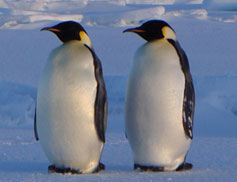
On the closing afternoon of the Joint Meetings of the AMS and the MAA in San Diego, the attendees were treated to a fascinating talk by Kenneth Golden (from the University of Utah), who gave this year’s Gerald and Judith … Continue reading
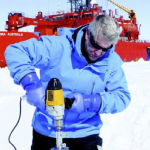 Mathematician at work - Ken Golden in Antarctica
Mathematician at work - Ken Golden in Antarctica
From the U~T San Diego, Saturday January 12, 2013 With a resume of scientific discoveries, and a track record of harrowing Antarctic adventures, University of Utah mathematician Ken Golden has stepped out of the ivory tower and onto thin ice. … Continue reading
I am attending the Joint Mathematics Meetings in San Diego, where I was convinced to help organize a special session on environmental mathematics focused on evaluating past climate changes and modeling of future variations. I am a meteorologist by training … Continue reading
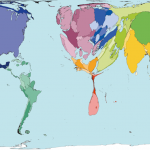 Carbon dioxide released into the atmosphere, by country
Carbon dioxide released into the atmosphere, by country
I was thrilled to get your last letter. I’m glad to see you are looking at some of the references I sent you last time. Figuring out who is responsible for higher atmospheric levels and how to respond to climate … Continue reading
In January I am normally in a southern US city attending the American Meteorological Society annual meeting. This week, I am in San Diego attending a different AMS – the American Mathematical Society Joint Mathematics Meetings. I am helping to … Continue reading
Dr. Emily Shuckburgh, the leader of the Open Oceans research group in the British Antarctic Survey, gave a terrific talk on the mathematics of climate science here in San Diego on the opening day (January 9) of the Joint Mathematics … Continue reading
Today is the official US launch of Mathematics of Planet Earth 2013 at the Joint Mathematics Meeting, with a special celebration at the Open House of the Institutes this Wednesday at 5h30pm. It is an excellent opportunity to recall the North-American origin of MPE2013. Here, we all share the passion of mathematics. Most probably, we also share passion for nature and our planet. MPE2013 is an opportunity to put together our two passions. Continue reading
 How much salt in your climate pancakes?
How much salt in your climate pancakes?
Doing your school research paper on climate change sounds like a great idea! Let me see if I can get you started. I’ll even put a few references at the end in case you want to look those up for … Continue reading
It is often the case that at the end of one of my talks about some aspect of climate research or about the development of tools for the analysis of climate I get asked questions regarding global warming. Whether global … Continue reading
 Mangrove fishes and algae in water suspension.
Mangrove fishes and algae in water suspension.
© Lunamarina | Dreamstime.com
A changing world raises great challenges since we need to take steps that either reduce the rate of global change or that manage resources in the face of global change. Both steps require making predictions, which requires theory. But the … Continue reading
As part of the United States launch of MPE2013, pedagogical talks on Integrating the Mathematics of Planet Earth 2013 in the College Mathematics Curriculum will be presented next week during the Joint Mathematical Meetings, the world’s largest annual mathematics conference in San Diego, California. Continue reading
As we enter the new year, SIAM — along with more than one hundred universities, research institutes, and other scientific organizations —is thrilled to be a part of Mathematics of Planet Earth 2013. It is an exciting year-long program dedicated … Continue reading
The Professional Science Master’s Programs (PSM), a new breed of graduate programs, have emerged in the last decade and a half as a response to the workforce need for STEM professionals with strong scientific and professional skills. Continue reading
Welcome to the MPE2013 Blog! During the coming year we intend to bring you information about the themes of MPE2013: mathematics (including statistics), climate, sustainability and the state of the planet. Some posts will report news items of general interest, … Continue reading
A new year is starting today. What will happen during this year? Will it again be warmer that than the normal, as have been the last 12 years? Will extreme meteorological events threaten our crops? Can we expect dramatic hurricanes … Continue reading
The UK’s Launch event at the Isaac Newton Institute was a fantastic success and the videos are now online. Look out for other upcoming events at the Isaac Newton Institute. Continue reading
The International Center of Mathematics CIM is a partner institution of the International Program Mathematics of Planet Earth 2013 (MPE 2013). CIM plans to organize and support several activities in the scope of International Program Mathematics of Planet Earth 2013 … Continue reading
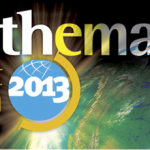
MPE2013 is being launched today! The international launch takes place at the winter meeting of the Canadian Mathematical Society in Montreal and coincides with the Canadian launch. Continue reading
The U.S. National Science Foundation (NSF) has provided a grant of $467,549 to support the extension of the Mathematics of Planet Earth (MPE2013) program into the future. Continue reading

Have you ever notiiced that the time when the Sun is at its highest position varies during the year? The earliest sunset is around December 10, before the winter solstice in the Northern hemisphere. Why? Continue reading
The Guinea Worm Disease, which already affected 50 million people, is almost eradicated with fewer than 2000 cases. What happened? Mathematical modeling helps identifying the most relevant parameter and design a strategy of action. Continue reading
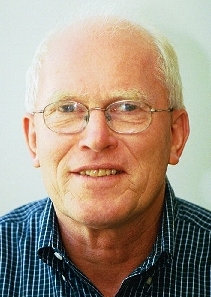
A message from Hans Kaper: “We anticipate a daily blog during the entire year 2013. You may choose your date(s) and topic(s) to blog about your favorite event(s). We understand that last-minute changes are part of the action. To register, send a message to blog@mpe2013.org, with an indication of preferred dates and topics.” Continue reading

The fascinating history of the attempts of calculating the age of the Earth from the gradient of temperature inside the crust and mantle goes back to the 19th century, in parallel with the development of geology, the theory of evolution, and the discovery of radioactivity. Continue reading

MPE2013 invites you to enter a competition to design virtual or physical museum-quality modules for an exhibition on themes related to Mathematics of Planet Earth.. The deadline for submissions is December 20, 2012.
The inauguration of the exhibition will take place at the headquarters of UNESCO in Paris on March 5-8 2013. Continue reading
 Photo Credit: Nasa
Photo Credit: Nasa
The motion of the inner planets (Mercury, Venus, Earth and Mars) is chaotic. This means that the motion of these planets could become unstable, and the orbit of one planet could cross that of another. Fortunately, this will not occur for billions of years. Continue reading
On this, my first, contribution to the MPE2013 blog I am particularly lucky to be able to announce to you that MPE2013 received the patronage of UNESCO. This includes, in particular, the international launch of the Mathematics of Planet Earth Open-Source Exhibition scheduled to take place in February, 2013. Continue reading
Hello world. This my website!
Hello world. This my website!
